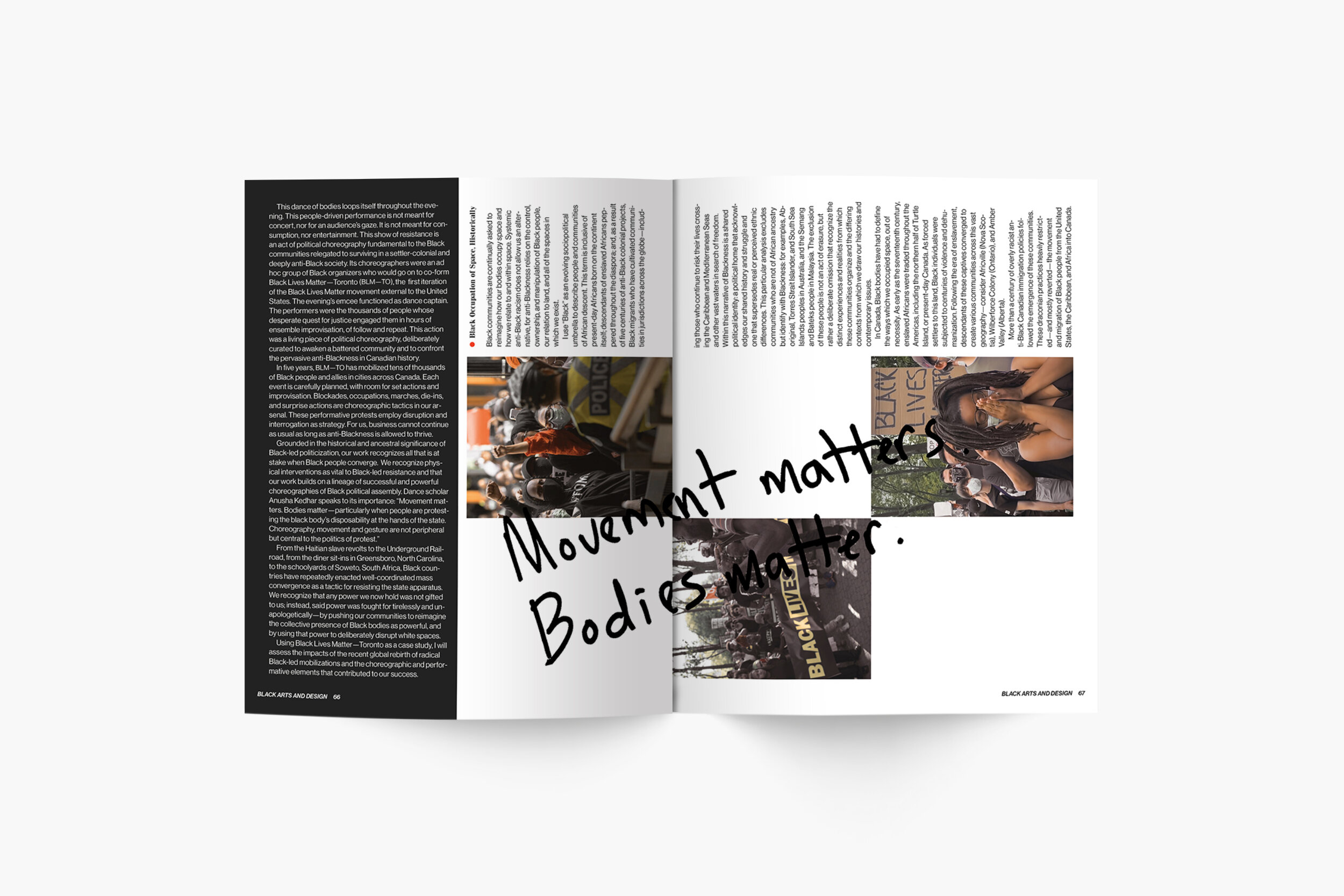Choreographic Design and Performing Black Activism
Rodney Diverlus
Black-centric direct action is deliberate about its use of space and intentional about the movement of Black people in that space. In reating BLM—TO, it was crucial to follow the legacy of Black resistance; for the work to follow a pulse, a rhythm. In the work, music, poetry, rapping, and spoken word are supported by union gestures: a waving of limbs, stomping to a beat, marching in sync. These actions are artistic and choreographic, but they are also more than that—they are politichoreography.
BLM—TO recognizes the ability of mass convergences of Black people to destabilize white Canadian liberalism. Their actions enact continued resistance to a societal apparatus designed to dictate how they assemble. They are deliberate choreographic projects that incorporate visual, rhythmic, and tactical Black-centricity to challenge the belief that Black folks taking to the streets are unruly and lawless, and to remind people of Black humanity—and collective history of well-coordinated mass resistance. Through their work, they pose the question: whose streets? With their movement they challenge not only the ownership of public space, but also the control of those same sites. By asserting their rights to justice they recognize that when Black people come together, they must be bold, unapologetic, and militant.







